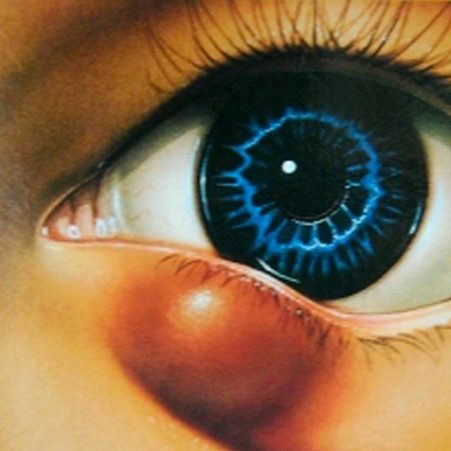BLEPHARITIS, STYES AND CHALAZION.
Blepharitis is a very common inflammation of the edge of the eyelid, which is often associated with the formation of styes and chalazion. With good eyelid hygiene, the patient can avoid complications and chronic lesions appearing.
What is blepharitis ?
Blepharitis is an inflammation of the edge of the eyelid. There are two types : staphylococcus and seborrheic. The former is ulcerous and the latter can be found along with seborrhea on other parts of the skin. In many cases, both types described can be found together.
What causes blepharitis ?
On the edge of our eyelids we have sebaceous glands which are responsible for producing the oil which forms part of our tears. Occasionally these glands produce excess oil which accumulates in the form of crusts and subsequently causes inflammation of the eyelid’s edge. At other times these crusts provoke a significant increase in the bacteria which is found on the skin , thereby causing staphylococcal blepharitis.
Why do styes and chalazion appear ?
It is common in patients with blepharitis that their sebaceous glands become obstructed and increase in size due to inflammation. We refer to this as chalazion. In other cases, the hair follicle of the eyelashes becomes infected by staphylococcus and a stye appears.
What are the symptoms ?
Patients with blepharitis have crusts and redness on the edge of their eyelids, which causes itching, a burning sensation and that of a foreign body. It also causes eyelashes to fall out. Blepharitis can lead to complications with corneal ulcers, conjunctivitis and the permanent loss of eyelashes or these growing in abnormal positions and therefore becoming problematic. When a chalazion appears, we notice a lump on our eyelid and although it is painless it does tend to become embedded. On the other hand, a stye is painful and in the middle it has a whitish point with pus.
How can this be treated ?
The basis for the treatment of blepharitis is cleaning the eyelids and eyelashes daily , using a diluted neutral soap or specific cleansing materials, with the aim being to remove any excess oil from the skin. Moreover, during acute phases patients should apply warm compresses and antibiotic ophthalmological ointments. The cleansing routine should not be interrupted and when symptoms get worse the treatment should be intensified and to avoid further complications the patient should be seen by an ophthalmologist. Localized dry heat is normally very helpful when chalazion appears, but if it becomes embedded the solution is for it to be removed surgically.
Surgical technique.
Blephex is a new procedure carried out in the clinic which allows the ophthalmologist to treat blepharitis by reducing the crusts and bacterial matter, which are the principal causes of inflammatory diseases of the eyelid, while improving the health of the eyelid in general.

